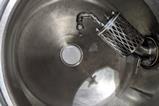Universal method bypasses obstacles to making neglected hydrocarbon skeletons
Chemists have developed the first general approach for synthesising dendralenes. The method involves two or three simple steps from commercially available aldehydes and provides access to a wider range of the branched oligoalekenes than previous approaches. It’s also the first method to prepare dendralenes in a stereoselective manner.
Dendralenes are sp2-hybridised hydrocarbons that are acyclic and branched. These cross-conjugated molecules are best known for their use in Diels–Alder reactions to create complex and interesting molecules more easily than with other starting materials. This makes them invaluable building blocks in organic synthesis, but methods for their synthesis have so far been quite restricted in terms of substituent type, location and number due to issues such as side reactions and the need for a readily available masking group.
![The first practical and general synthesis of [3]dendralenes](https://d2cbg94ubxgsnp.cloudfront.net/Pictures/480xany/9/5/5/500955_figure_376448.jpg)
Now, a team led by Michael Sherburn at the Australian National University in Canberra has devised a new approach for dendralene synthesis, which works by following the dibromo-olefination of a starting aldehyde with Negishi cross-coupling reactions. The team applied their method to access 51 mono- through to penta-substituted dendralenes with a range of substituents and used a selection of these to demonstrate the molecule building potential of these molecules. Sequential Diels-Alder reactions, they showed, can generate constitutional isomers of multicyclic products out of distinct stereoisomeric dendralenes – a process now only possible because this new dendralene synthesis can make stereoisomeric dendralenes. Separately, the team also made a dendralene that can undergo two sequential 6π electrocyclisations and transmit the triene functional group – another first.
By acting as a blueprint for cross conjugated acyclic hydrocarbon synthesis, the researchers say their method will permit the chemical synthesis of any conceivable dendralenic structure, leading to new applications in step economic total syntheses.
References
This article is open access
M Sherburn, J George and J Ward, Chem. Sci., 2019, DOI: 10.1039/c9sc03976g

















No comments yet